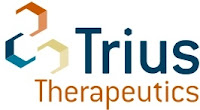The FDA recently announced
the formation of a new task force to support innovation in antibacterial drug
development. I have received a
number of calls about this and have recently been misquoted. So I thought I would try and let you
know my perspective on all this myself.
The one good thing about the GAIN act is that it requires
the FDA to review and revise as necessary its guidance on the development of
antibacterial drugs such that drugs active against important resistant
pathogens (the ESKAPE bacteria) can be brought forward to patients and
physicians in an expeditious manner. The FDA says that this task force was
formed based on this clause in the GAIN act. But, in fact, the FDA came to realize that the strategy that
they have been trying to implement for the last 12 years – that of increased
stringency of non-inferiority trial designs for antibacterials – is not only
not working, but is actually driving the industry out of the business. This is something I have been preaching
all this time and something Bob Moellering and I predicted would happen
way back in 2002! And since 2002, things have only gotten worse.
An advantage of this clause of the GAIN act is that it
provides congressional cover for innovative approaches that might be viewed by
some as increasing risk. It is
clear that trial designs where we only study small numbers of patients will
increase the risk of seeing unpredicted adverse events once the drug achieves
wider use. But my own calculations
suggest that large trials have been unable to detect rare events in any
case. These events have been rare
enough that they are no different than many marketed antibiotics and other
drugs in any case. Therefore, to
me, and I think to patients who are infected with these resistant pathogens,
the slightly increased risk is clearly worth it since the alternative is no
therapy. But for the FDA – the
cover from congress, especially after the Ketek
debacle of 2006, is clearly important. Its important since it is very likely that a new antibiotic, at some point, will result in some adverse event that is rare and was not predicted by prior data. When that happens, rest assured, congress will once again rise to the occasion to try and make votes out of the fact that no drug is 100% safe and FDA scientists, clinicians and staffers will pay the price. I just hope the GAIN act is enough cover for the FDA folks.
Back in May, when the FDA asked the Brookings Institution to
help them review their stance on antibacterial drug development, Janet Woodcock
stated
that the FDA was going to reboot.
Janet, Rachel Sherman and others at the FDA finally got it. They finally understood that we were
going backwards and that it might be true that new antibiotics active against
resistant pathogens could be available everywhere BUT the US if they continued
down their current path.
Another fascinating aspect of all this is that the FDA
obviously recognizes another problem they face. Their normal advisory committee process is fatally flawed
because of overly restrictive conflict of interest rules. This puts them in a position of relying
on people who have insufficient experience and expertise regarding the FDA’s
key questions to provide reasonable advice. For this reason they turn to think tanks like Brookings. And it’s a good thing, too!
I firmly believe that this process will work! I believe that we will end up with
feasible designs and innovative approaches to getting urgently need antibiotics
to Americans who need them.
I am singularly impressed by the determination of Janet Woodcock, Rachel
Sherman and the anti-infectives division to finally tackle this problem head-on. The big question for me is when will we
get something on the table. At the
last Brookings meeting, I suggested that we use the European Draft Guidance as a starting point and go from there. I think there was much support for this
idea since Europe is way ahead of the US in its thinking in this area. Their non-inferiority trial designs are
feasible and use clinically relevant endpoints. They have listed a number of innovative new approaches to
the rapid development of antibacterial products meeting areas of high medical
need – like resistant infections.
So – FDA – lets get going! I am ready, willing and able to do anything needed to get
this moving quickly!




